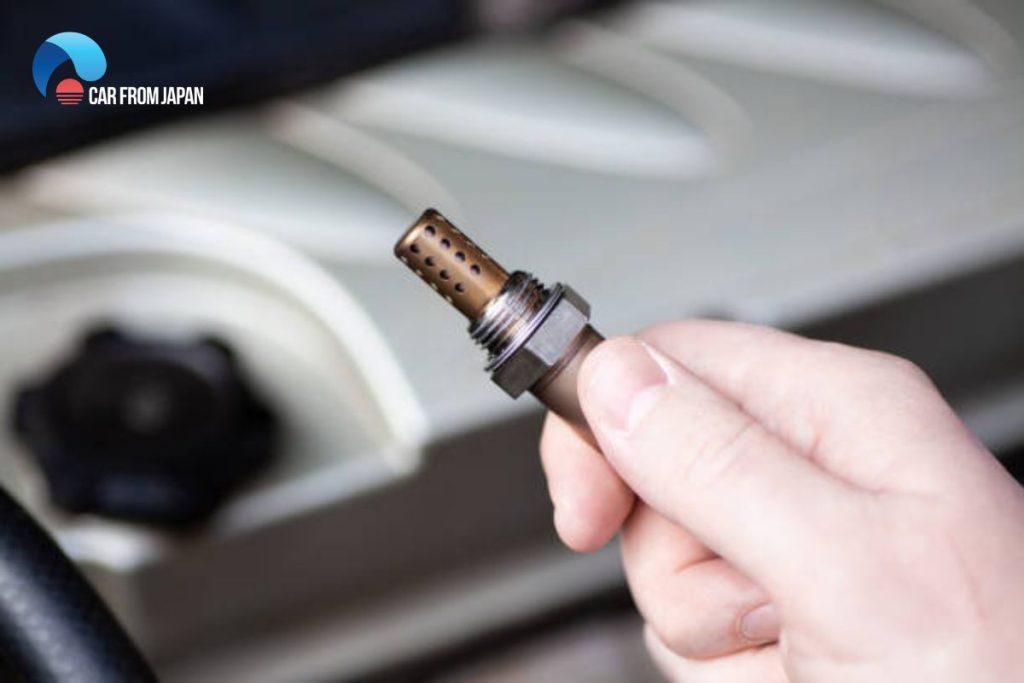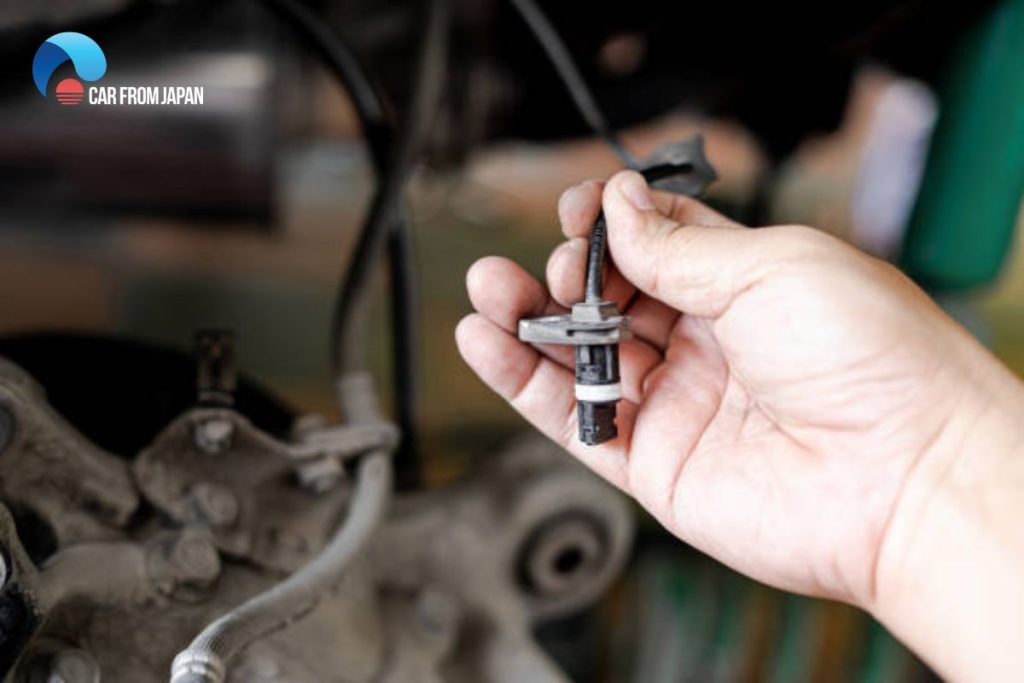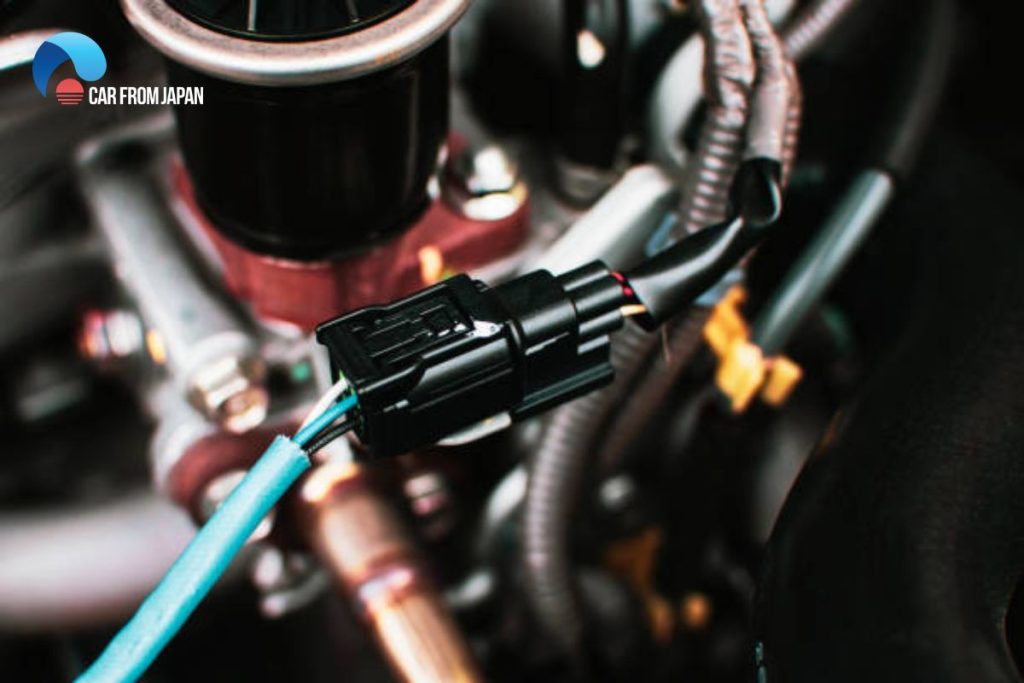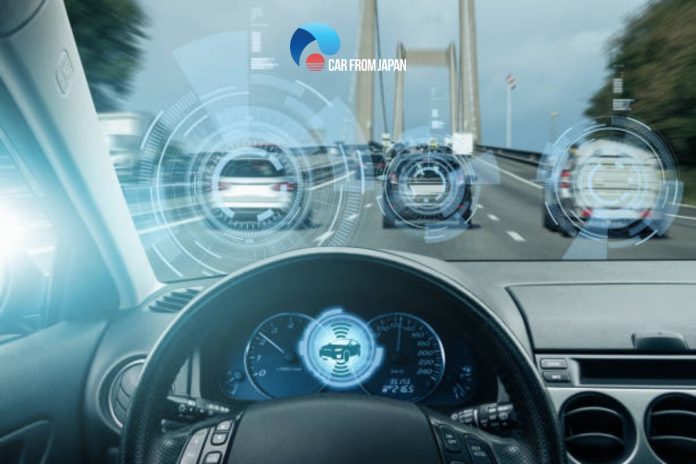Want better gas mileage? Need instant power when you hit the gas? You can thank the dozens of sensors living inside your engine. Every aspect of your car’s performance, from the air intake to the exhaust, is managed by these little electronic reporters. Let’s break down the most vital types of car sensors and see how they work together to deliver that smooth, efficient drive.
Contents
Common Types Of Car Sensors
We’ll look at the main types of car sensors you rely on every day, so you know exactly what they do and why they matter when that dashboard light suddenly appears:
The Mass Air Flow sensor (MAF)
Among different types of sensors used in cars, the Mass Air Flow Sensor (MAF) is a computer-controlled sensor that calculates the volume and density of the air taken in by the engine. This, in turn, ensures the right amount of fuel is used for optimized operating conditions.
Accordingly, in an internal combustion engine, the standard air volume will help the ECU balance and provide accurate information to the combustion chamber. Therefore, if this part malfunctions, the engine will operate unstably, power will decrease, and consume more fuel than usual.
The MAF sensor is responsible for determining the speed and volume of the air ratio going into the fuel injection system of the internal combustion engine. Normally, the location of this sensor is between the filter and the intake manifold.
Typically, the MAF sensor is used in conjunction with the oxygen sensor to exactly control the air-to-engine ratio. In addition, because air density depends on factors such as ambient temperature, altitude, etc., the MAF sensor plays an effective role in determining the amount of air entering the cylinder. If this sensor is faulty, the car may stall, and the fuel usage will be higher than necessary.
The Engine Speed sensor
Engine Speed Sensor is attached to the crankshaft and monitors the spinning speed of the crankshaft, which controls the fuel injection and timing of the engine. There are many ways for a car engine to stop suddenly, and this sensor will prevent that for drivers.
Therefore, a bad speed sensor will affect the operation of the engine, such as making the engine unable to start, uneven idle speed, difficulty accelerating, more fuel consumption than usual, and vibration due to the wrong ignition process.
Oxygen sensor

Oxygen sensors and A/F sensors are part of the engine sensing system in cars, with the function of controlling the fuel supplied to the engine, thereby improving operating performance and fuel economy.
The oxygen sensor in the car is an electronic device that measures the residual oxygen concentration in the emissions of the car to help the engine adjust the appropriate level of fuel injection. This helps to ensure operational performance while strictly complying with emission standards. The system lights will come on to warn in the event of a malfunctioning part.
In case the vehicle does not have an oxygen sensor system or a faulty sensor, it will directly affect the engine’s performance. For example, it is difficult to accelerate, fuel-consuming, or exceed emissions.
Manifold Absolute Pressure sensor
A Manifold Absolute Pressure Sensor, or MAP, senses the engine load. As it is mounted on the intake manifold, it can measure the difference between the intake manifold pressure and outside. This is important for the engine to be able to adjust the fuel injection based on the change in pressure.
During operation, this sensor generates a signal sent to the ECU. From there, the ECU will use the received information to adjust the appropriate ignition time and enrich the air and fuel mixture for the engine. Installing a MAP sensor contributes to improving the vehicle’s performance and controlling fuel consumption.

Spark Knock sensor
The spark knock sensor is one of the important sensors on the engine. Most engines today are equipped with this sensor. This sensor is responsible for sensing and detecting vibrations caused by the detonation.
The engine ECU uses the signal from this sensor to re-adjust the ignition timing and prevent detonation. A spark knock sensor ensures that the fuel is burning smoothly and not detonating (exploding erratically). Detonation can cause the head gasket to fail, piston lands to crack, and rings to break, as well as possible rod bearing damage.
When the spark knock sensor fails, the Check Engine light will come on to notify you. A defective sensor can cause the vehicle to detonate due to incorrect information transmitted to the ECU, so the ECU does not adjust to handle this phenomenon.
Fuel Temperature sensor
The Fuel Temperature Sensor is another sensor that ensures your car’s fuel consumption is at its most efficient. The colder the fuel is, the denser and the slower it burns, while when the fuel is warm, it burns faster.
There are many car parts that will get damaged when the car runs out of fuel, so this sensor ensures that the right amount of fuel is injected to keep the vehicle running smoothly while being as efficient as possible.
This sensor, installed in the car’s fuel tank, is responsible for measuring the amount of gasoline in real time, then transmitting the data to the control system. Together with the cruise monitoring device, the system can compare and detect abnormal fuel losses and make timely improvements.
FTS works based on the sensor mechanism and the method of measuring the liquid level, where the liquid is gasoline fuel and oil. This sensor recognizes the liquid level of the metal rod mounted in the tank, and from there will know the current fuel level as well as the fuel consumption level of this vehicle.
In a nutshell, this sensor has the function of sensing the temperature of the fuel. It will monitor the density/temperature of the fuel, from which the vehicle system can control emissions and optimize fuel use.
Voltage sensor
Another important part of the car sensors list is the Voltage Sensor. This sensor manages the idling speed of the car and ensures the speed is increased or decreased as necessary.
With these many sensors, drivers might spend a lot of money in order to purchase all of them, and some might not even be necessary for their needs. Experienced car owners will only choose the sensors that are suitable for their vehicles, and with this article, you will now understand what your beloved car needs.

Car Sensors List
As car owners, knowing the function of this equipment is very important. For you to understand the definition and the function easier, here is a list of popular car engine sensors used in modern vehicles:
| Sensor | Main Function | |
| 1 | The Mass Air Flow Sensor | Calculates the density and the volume of the air taken in by the engine |
| 2 | The Engine Speed Sensor | Monitors the spinning speed of the crankshaft |
| 3 | Oxygen Sensor | Measures the amount of unburden oxygen presented in the exhaust pipe |
| 4 | Manifold Absolute Pressure Sensor | Measures the manifold pressure inside and outside |
| 5 | Spark Knock Sensor | Ensures that the fuel is burned correctly |
| 6 | Fuel Temperature Sensor | Ensures the right amount of fuel is injected to keep the motion smoothly |
| 7 | Voltage Sensor | Manages the car speed and ensures the speed is controllable |
Final Thoughts
These small, critical sensors control nearly every action your engine takes. They are the constant reporters that enable the engine’s computer to maintain the perfect balance of fuel and air, which is why they are essential for both top-level performance and great gas mileage.
Ultimately, if your car is running smoothly, these sensors are doing their job flawlessly. But the moment that orange Check Engine Light flashes on, it’s a clear sign that one of these vital parts—like the MAF or an O2 sensor—has detected a fault. Knowing what each sensor does is your first and best tool for understanding your car’s health.




continue i wan know about automobaile technology
Hi, kindly advise
my Diahatsu sirion 1.0 3 cylinder don’t start but when I disconnect a sensor( that changes the car’s idling) it starts easily and drives without any problem
Am grateful the good information received from you, have a subaru legacy, has a picking problem during climbing of a raised ground or mountain, what could be the cause of this
Thanks for the updates in technology
Important information indeed
Lemmi answer Mr wafula up there. Ur Subaru legacy may have a problem with the fuel pump but the most probable cause of that is a clogged catalyti converter chamber along the e exhaust pipe. Am a professional tech & I have treated that severally.
My car Honda crv automatic transmission is only changing two gears 1 and 2 what is the problem…
Honda CRV automatic transmission having problem in gearing it only shifts 1 and 2
this is because Honda CRV is a very bad, cheap, and worst quality car. its any function does not works properly. for sure the gear box would not be working properly.
Check the 2-3 , 3-4 solenoids in valve body immediately
am 40 man old from japan i car porblem, car no go why?
I very interested in know about automobile technology
Japanese vehicles are mostly used in my country, Nigeria. I am interested in servicing Japanese car. Can you help?
Are all these sensor be found in a BMW X5 2014 Model?
Can all be found in a BMW X5 2014 model?
I’ll like to know
WoW !! Helpful Information ! as we are automotive mechanics its a very important.
Thank you so much for your very good information !!
am degu. from bahir dar,ethiopia.am student ,it is good information thank you for all!
I drive an Audi a4 2005,lamda sensor is faulty. Can I fit a new lamda oxygen sensor of the latest vw polo?
What is its Pat number
Welcome carobaronline.com
We deal in all car parts plz connect my WhatsApp number 9899541195 from India.
I have dealing to sensor plz provide indian distributer contact s.